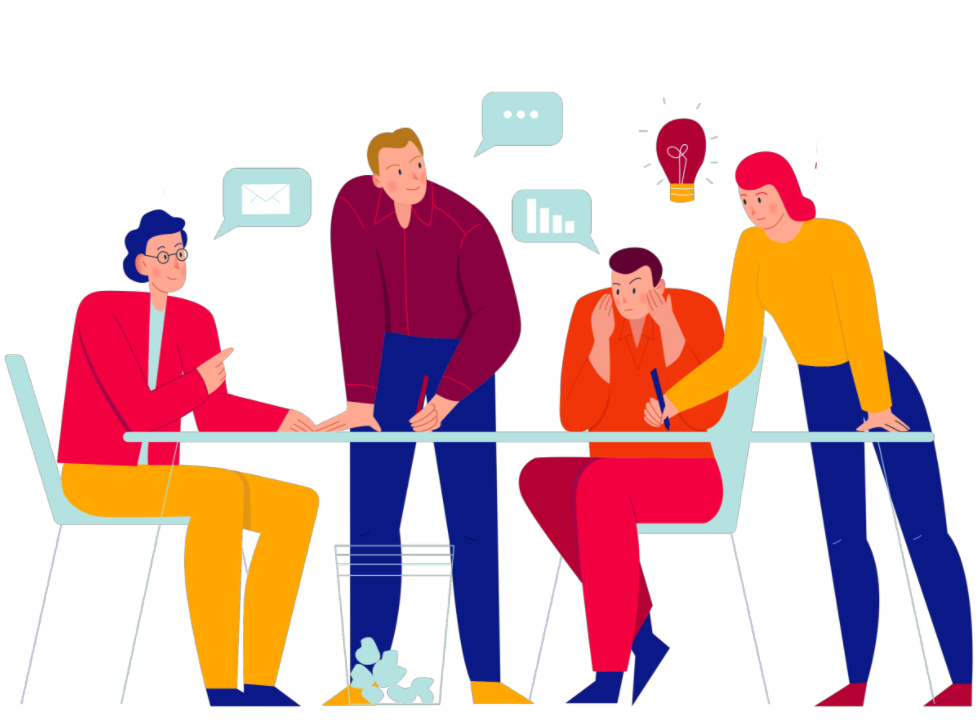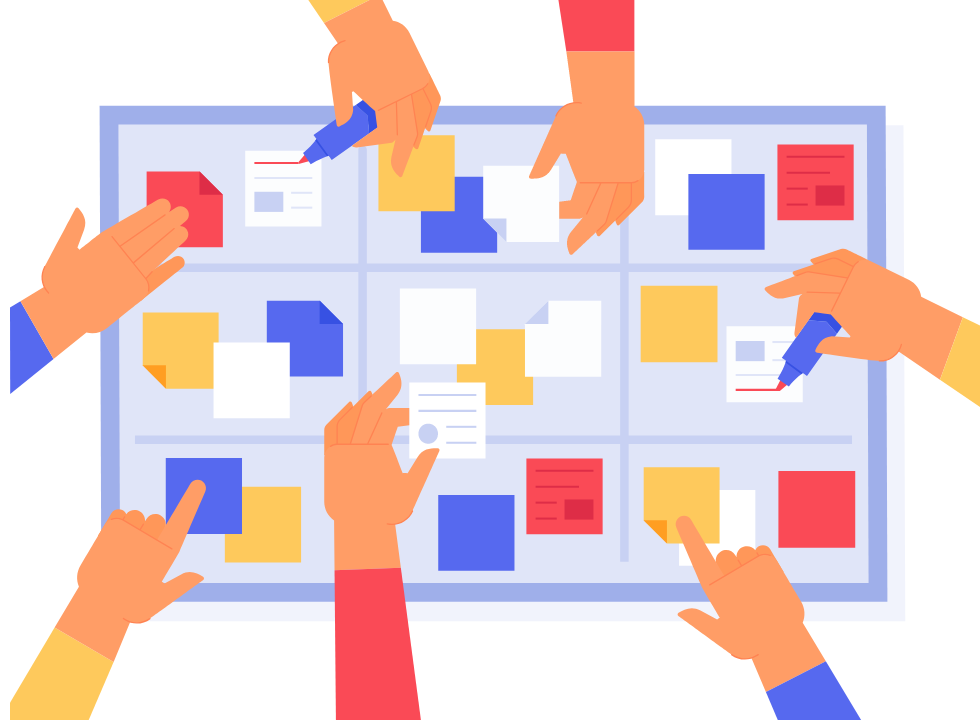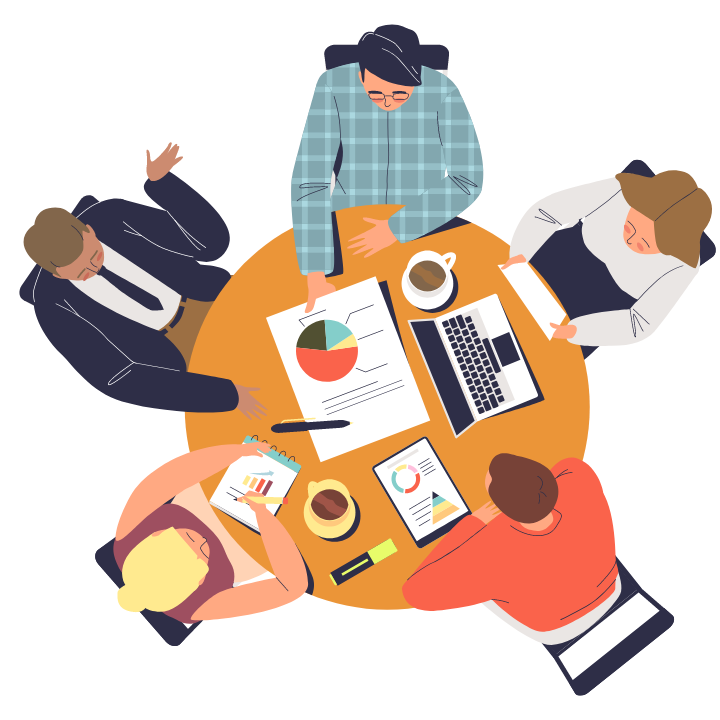KJ Method can help your R&D team innovate faster, Here’s how
When solving a problem, we often organize brainstorming sessions with the team. This involves dozens of brains shooting ideas like a machine gun. However, the generation of a huge heap of ideas, not surprisingly, often becomes a problem itself.

Having too many solutions and ideas (mostly solving only part of the problem) on hand can often lead to the conundrum about which ones to spend resources on and which ones to discard. Also, brainstorming sessions like these, returns a lot of ideas that follow entirely different approaches to solve a problem and makes it difficult to reach consensus.
To solve this unexpected problem and improve the efficiency of our brainstorming sessions, we headed over to one of the most famous data organizing and prioritizing technique – KJ Method or the Affinity Diagram.
Are you struggling to come up with new ideas?
Our idea generation techniques report can help! This comprehensive guide covers a variety of proven techniques for generating creative and innovative ideas. Fill out the form to request for the report:

So, what is KJ Method or an Affinity Diagram?
Coined in the 1960s by Jiro Kawakita, KJ method is an effective way to organize ideas and decide which ones are worth going forward with. It also helps your team to vote for the best ideas instead of putting the prioritizing task on only one individual and thus eliminating any biases.
To understand this better, let’s consider your team is trying to improve the overall efficiency of electric cars (range) that your company manufactures. Now, there could be dozens of ways to approach the problem and obviously they are going to come up with a diverse range of solutions.
Here are a few sample solutions that might be drawn by 20-30 members of your team:
- Strip down extra weight from the car
- Introduce an economy mode reducing the performance to save the battery power
- Make the engine hybrid
- Add solar panels on the roof
- Improve the aerodynamics of the car
- Spread awareness about fuel saving practices
- Use lightweight materials to reduce the weight of the car
- Introduce regenerative breakings
- Improve the battery capacity
- Smart turn off and On feature on signals to save battery
Now, these were just some examples from the random production of first thoughts your team had. Choosing the best one from these, however, requires a lot of refining and categorization to start the implementation phase.
This is where the KJ Method takes the weight off your shoulders. With few posts it notes and group discussions, KJ method can help you filter similar ideas, categorize the related ones, and vote the best among them, and thus accelerate your innovation process.
How to use the KJ method to improve your brainstorming sessions:
KJ Method is all about organizing ideas by utilizing the power of minds that generated them. We can divide this entire process into 3 steps.
- Collect ideas
- Organize and Categorize ideas
- Vote the best ones
Collecting Ideas
This step is as simple as its name. Write down all the ideas that your team generate on sticky notes or short cards. Make sure that problem statement is clear to all the members as even a slight confusion can leave you with irrelevant ideas.
Determining the expected outcome of the solution beforehand can help in getting everybody on the same page. In the example that we portrayed above, increasing the range of electric car was the expected outcome.
Now, each sticky note represents an idea. It’s time to stick them on a whiteboard or table so your entire team can analyze them. Every team member has their own expertise and having a look at different solutions from different colleagues can give them a new perspective to think from.

You can also encourage team members to put forward any new ideas, or changes in the previous ideas.
Organize and Categorise Ideas
Now comes the most important step of the KJ Method. The notes on the whiteboard are random and not organized and leaving this job to a single person can take up a lot of time with no guarantee of a better outcome.
In this step, you have to utilize your team members to group similar ideas together. It can be any kind of similarity, based on the features, areas being targeted, outcomes, or anything else that suits your requirements best.
The goal is to group similar ideas and label the groups. Taking our electric car example, few ideas were related to design changes, few were performance related, and many were related to outside factors.

This categorization will leave you with similar ideas being pasted close together. Labels will help you focus on the broader picture. Make sure you merge similar ideas and categories together.
Vote the best ones
Just as the name goes, it’s time to vote the best ideas, again, with the help of your team members. Voting can be tricky and you have to think of an approach that will not become too subjective and don’t take too much of your time.
One way could be, giving each team member 3 to 5 votes to rate ideas. Every member can then vote 3 or 5 ideas on the whiteboard. The idea with maximum votes, in the end, can be listed out as an ideal solution. Similarly, you can use a number of votes to prioritize these ideas and move forward to the planning and implementation part.

Another way to help your teammates decide the best ones is by discussing each one separately. This way sure will take a lot of time but, will reveal even stronger results and might even give you something more to start with.
After the voting, you might be left with fewer but implementation worthy and efficient ideas that every team member agrees on. The most promising ideas can be taken to the implementation phase while you can discuss the other highly voted ideas separately.
Conclusion
Even though pretty straightforward and easy to carry out, the KJ Method is really effective in utilizing the entire brainpower of your team and quickly derive solutions. The categorization can help you decide different areas through which a solution can be originated. Similarly, you can start working on the highly voted ideas right away. Thus saving you the time of back and forth communication with different members.
Want to make your R&D activity even more efficient? Here’s how you can improve research focus to get quality returns on R&D.
Edited By: Nidhi, Marketing




